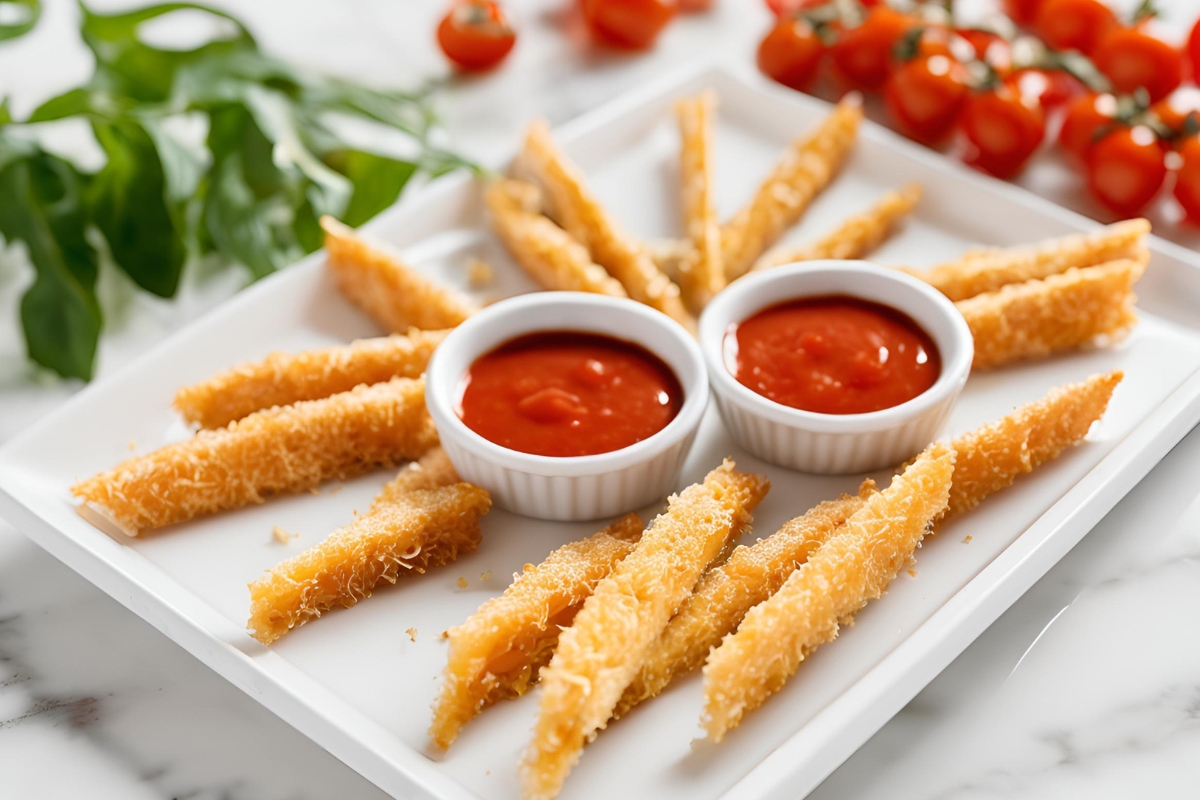Understanding Cheese and Stick
There’s something universally satisfying about food on a stick—it’s convenient, fun to eat, and incredibly versatile. And when that food involves cheese, you’ve got a winning combination that appeals to all ages. Whether you’re grabbing a quick snack or looking for a shareable treat, cheese on a stick is an undeniable crowd-pleaser. But what exactly is it, and why is it so popular?
What Is Cheese on a Stick?
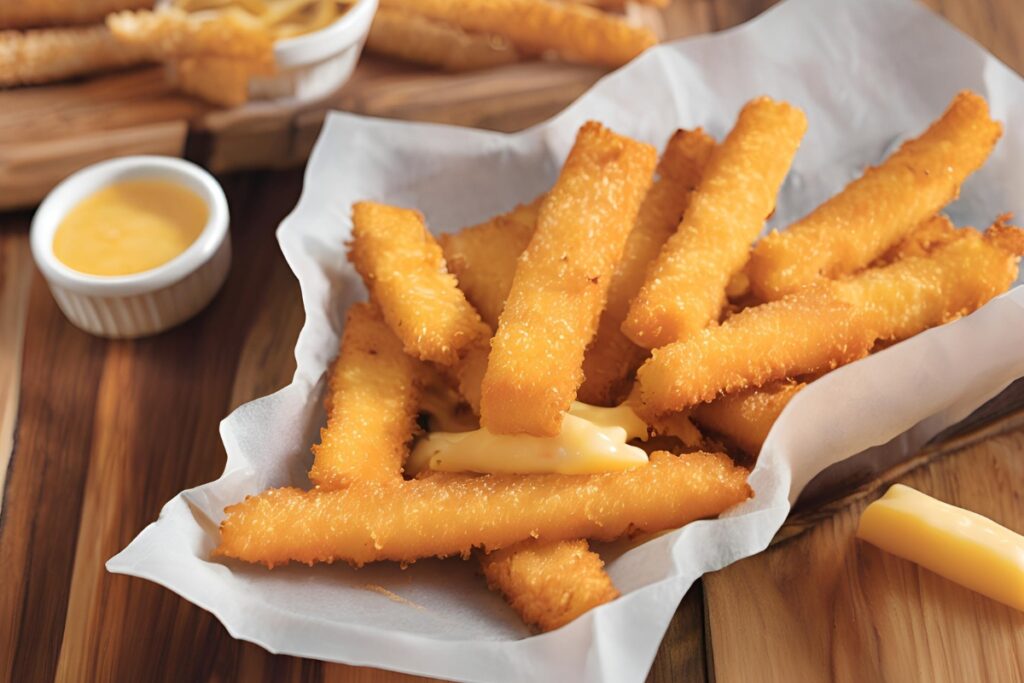
Cheese on a stick is exactly what it sounds like—a delicious piece of cheese, typically skewered onto a stick for easy handling. Often coated in batter and deep-fried or served fresh and chilled, this snack comes in a variety of forms. Some versions are savory and indulgent, while others lean lighter for a healthier appeal. This simple yet versatile treat combines the creamy richness of cheese with a playful presentation that’s perfect for on-the-go snacking or festive occasions.
Popular Names
Cheese on a stick goes by different names depending on the location. In the U.S., people commonly call the breaded and fried version “mozzarella sticks,” while state fairs often label them “cheese on a stick.” In other places, you might hear terms like “cheese pops” or “cheese skewers.” These variations show how much people around the world love this concept, regardless of the name.
Regional Variations in Terminology
Regional culinary trends often influence how people describe cheese on a stick. For example, in Korea, vendors serve “Korean corn dogs,” which feature cheese coated in batter and rolled in toppings like sugar or potatoes. In parts of Europe, chefs present skewered cheese fresh, paired with charcuterie. These regional twists add depth and character to this seemingly simple snack.
Origins of Cheese and Stick as a Food Concept
While cheese has been a staple of human diets for thousands of years, the concept of pairing it with a stick is a more modern innovation. Its evolution is tied to the growing demand for convenient, portable foods that don’t sacrifice flavor.
Historical Background
Cheese snacks, in general, have a rich history. Cheese itself dates back to ancient civilizations, where it was used as a way to preserve milk. Fast forward to the 20th century, and cheese started appearing in bite-sized, snackable formats—think cheese cubes at parties or individually wrapped slices for lunchboxes. These innovations paved the way for more creative ideas, like putting cheese on a stick.
Evolution of Cheese Stick Varieties
Cheese sticks began gaining popularity in the mid-1900s, particularly in the United States, where fried mozzarella sticks became a restaurant favorite. Over time, variations emerged, including different types of cheese, coatings, and preparation methods. Today, you can find everything from classic fried cheese sticks to plant-based alternatives, reflecting the growing diversity in dietary preferences.
Who Enjoys Cheese Sticks?
Cheese sticks aren’t just a hit with kids—they’re a snack that transcends age, cultural backgrounds, and even dietary restrictions (thanks to the rise of vegan and gluten-free options). Their universal appeal lies in their adaptability and the sheer joy of eating cheese in any form.
Popularity Across Different Age Groups
Kids, of course, are some of the biggest fans of cheese sticks, especially those found in school lunches or fast food menus. However, adults also enjoy this snack, whether it’s as a nostalgic treat, a quick energy boost, or a gourmet appetizer. College students often stock up on frozen mozzarella sticks, while foodies seek out artisan versions at specialty stores and restaurants.
Common Occasions and Uses
Cheese sticks are perfect for a variety of occasions. Whether you’re hosting a party, packing a school lunch, or indulging in a guilty pleasure during a movie night, they fit the bill. They’re also popular at state fairs, where everything tastes better on a stick (deep-fried, naturally). Meanwhile, their bite-sized format makes them a go-to for snacking during road trips, game nights, or even casual office meetings.
Components of Cheese and Stick
Cheese on a stick might sound simple, but its components play a key role in its flavor, texture, and overall appeal. From the type of cheese to the choice of stick, every element contributes to making this snack as enjoyable as it is practical.
Types of Cheese Commonly Used
The cheese, of course, serves as the most important component. Certain types stand out as favorites for making cheese sticks because of their texture and melting properties, showing that not all cheeses work the same way.
- Mozzarella: A classic choice, mozzarella is loved for its mild flavor and incredible stretchiness when melted. It’s often used in fried versions of cheese sticks.
- Cheddar: Slightly sharper and firmer, cheddar adds a more robust flavor to cheese sticks. It’s commonly used in chilled versions or as part of a blend.
- String Cheese: Pre-packaged string cheese is another popular option. It’s easy to handle and already portioned, making it ideal for quick recipes.
These cheeses work well because they balance creaminess with structural integrity, ensuring the cheese doesn’t melt completely off the stick.
Characteristics of Mozzarella, Cheddar, and String Cheese
Each cheese brings its own unique qualities to the table:
- Mozzarella: Soft and pliable, mozzarella melts beautifully without becoming greasy. This makes it perfect for deep-frying or breading.
- Cheddar: With its firmer texture, cheddar holds up well when served fresh. It also brings a tangy kick that contrasts nicely with sweet or spicy dips.
- String Cheese: Designed to pull apart easily, string cheese offers a playful eating experience. It’s typically made from mozzarella or a mozzarella-cheddar blend.
Types of Sticks or Skewers Utilized
The stick may seem like an afterthought, but it’s an essential part of the equation. It provides structural support and determines how the snack is eaten.
- Wooden Skewers: These are the most common option, offering durability and a rustic aesthetic.
- Bamboo Sticks: A sustainable choice, bamboo sticks are often used for gourmet presentations.
- Edible Sticks: For an eco-friendly twist, some recipes use edible sticks made of breadsticks, pretzels, or other crunchy snacks.
Edible vs. Non-Edible Options
Edible sticks offer more than practicality; they enhance flavor as well. For instance, pretzel rods deliver a salty crunch that pairs wonderfully with creamy cheese. People often choose non-edible options like bamboo or wooden skewers for a traditional touch, and they can dress them up with decorative handles for special occasions.
Variations of Cheese Sticks
Cheese sticks come in many forms, each with its own preparation method and flavor profile. Whether you prefer them hot and crispy or fresh and chilled, there’s a variation to suit every taste.
Deep-Fried Cheese on a Stick
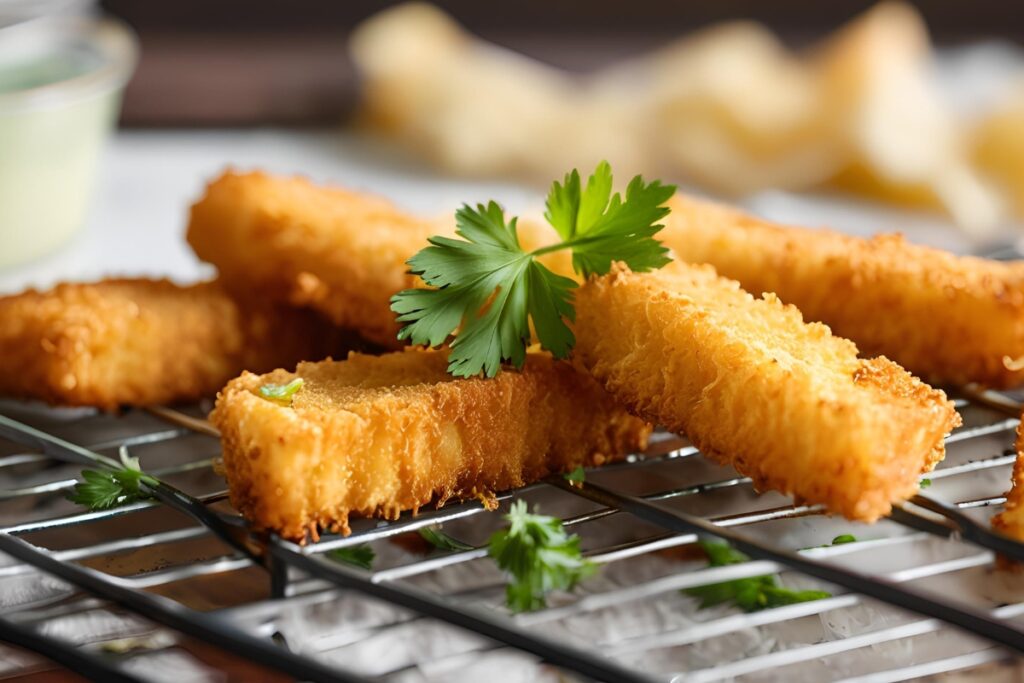
Deep-fried cheese on a stick, a quintessential fairground snack, offers pure indulgence. Cooks coat the cheese in a thick batter (often cornmeal-based) and fry it to golden perfection. This process creates a crispy exterior that reveals gooey, melty cheese inside.
Fresh and Chilled Cheese Sticks
For a lighter option, chilled cheese sticks are a fantastic choice. Typically made from string cheese or cheddar, these are served cold and uncoated, making them a popular snack for kids’ lunches or quick bites on the go.
School Cheese Sticks vs. Commercial Cheese Snacks
Manufacturers specifically design school cheese sticks, often individually wrapped, to be convenient and nutritious. They usually use string cheese, which contains lower fat and sodium levels compared to commercial snacks. On the other hand, commercial cheese sticks—especially the fried variety—focus more on indulgence and flavor.
Nutritional Value
Cheese sticks can be both a satisfying treat and a source of essential nutrients. However, their nutritional value varies depending on how they’re prepared.
Calorie Content and Macronutrient Breakdown
The calorie content of cheese sticks depends on whether they’re fried or fresh:
- Fried Cheese Sticks: A single serving (about 3 sticks) can contain 250–400 calories, primarily from fat and carbohydrates. They’re rich in protein but also higher in saturated fats.
- Fresh Cheese Sticks: These are typically lower in calories, with a single stick providing around 80–100 calories. They’re high in protein and calcium, making them a healthier option for everyday snacking.
Comparing Packaged and Homemade Options
Packaged cheese sticks are convenient, but they often contain preservatives and higher sodium levels. Homemade versions, on the other hand, give you full control over the ingredients. You can use organic cheeses, gluten-free coatings, or even air-fry them for a healthier twist.
Making and Enjoying
Cheese on a stick is one of those snacks that feels fancy enough for a party but simple enough to make on a lazy afternoon. With just a few ingredients and some creativity, you can whip up variations that cater to different tastes and dietary preferences.
How to Make Cheese on a Stick at Home
Creating cheese on a stick at home is surprisingly easy, and the possibilities for customization are endless. Whether you’re in the mood for something crispy and fried or fresh and simple, you’ll only need a handful of ingredients and a few basic steps.
Recipes for Different Types of Cheese Sticks
- Classic Deep-Fried Mozzarella Sticks
- Ingredients:
- Mozzarella cheese sticks (pre-cut or string cheese)
- 1 cup of flour
- 2 large eggs (beaten)
- 1 cup breadcrumbs (seasoned or plain)
- Oil for frying
- Instructions:
- Prepare a breading station with separate bowls for flour, eggs, and breadcrumbs.
- Coat each cheese stick in flour, then dip in the beaten egg, and finally roll in breadcrumbs until fully covered.
- Heat oil in a deep pan to 350°F (175°C). Fry the sticks in batches until golden brown.
- Drain on paper towels and serve with marinara sauce.
- Ingredients:
- Chilled Cheddar and Pretzel Sticks
- Ingredients:
- Cheddar cheese blocks (cut into bite-sized cubes)
- Pretzel rods (halved)
- Instructions:
- Insert a pretzel rod into each cheddar cube.
- Arrange on a platter and serve with honey mustard or ranch dressing for dipping.
- Ingredients:
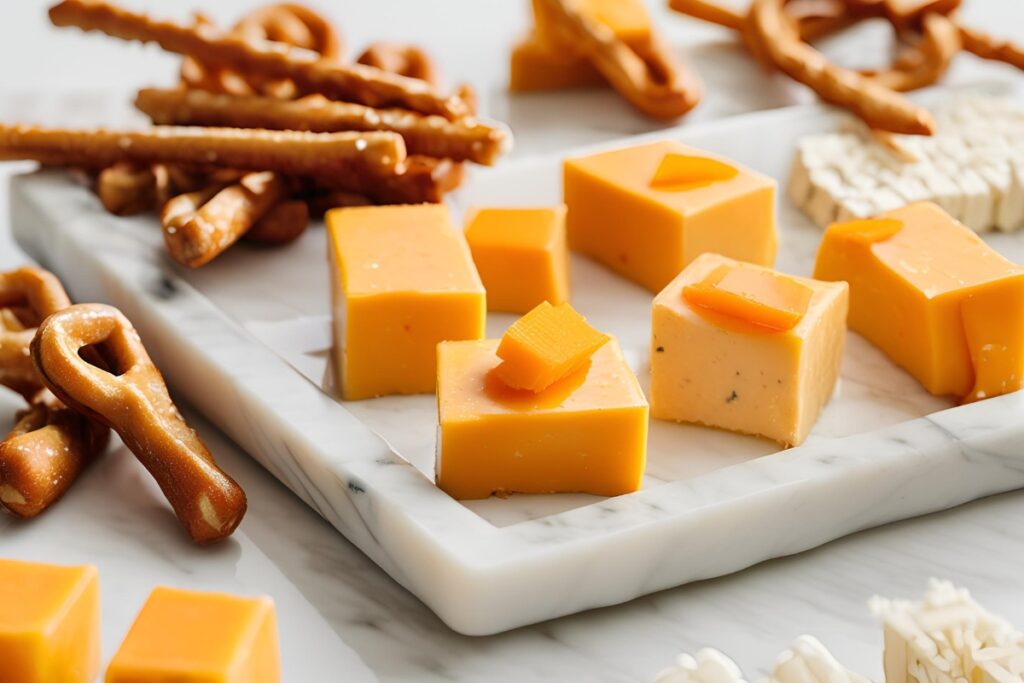
Tips for Achieving Perfect Texture and Flavor
- For fried cheese sticks: Use a thermometer to ensure the oil stays at the ideal frying temperature. If it’s too hot, the coating may burn before the cheese melts.
- For chilled options: Choose high-quality cheese with bold flavors to keep the snack interesting.
- Consider freezing breaded cheese sticks for 20–30 minutes before frying to prevent the cheese from oozing out too quickly.
Serving Cheese Sticks for Various Occasions
Cheese sticks are incredibly versatile, making them suitable for everything from casual snacks to elegant party appetizers. How you serve them can elevate their presentation and enhance the overall experience.
Pairing Cheese Sticks with Dips and Sauces
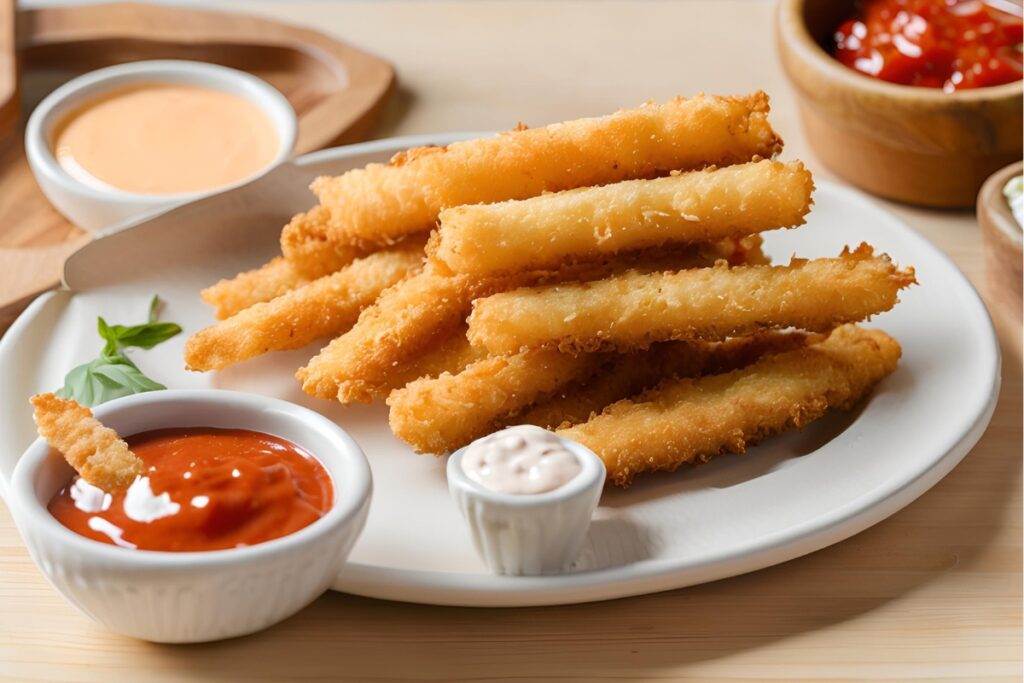
The right dip can take your cheese sticks to the next level. Here are some popular pairings:
- Marinara Sauce: A classic choice for fried mozzarella sticks.
- Honey Mustard: Perfect for chilled cheddar sticks or pretzel versions.
- Ranch Dressing: A kid-friendly option that works with almost any variation.
- Spicy Aioli: Adds a kick for those who like a bit of heat.
Creative Presentations for Parties and Events
To make cheese sticks stand out at gatherings, try these ideas:
- Serve them in individual shot glasses filled with dipping sauce.
- Arrange them in a “cheese bouquet” with edible sticks like breadsticks or pretzel rods.
- Add garnishes like fresh herbs, crushed nuts, or even edible flowers for a gourmet touch.
Future Trends in Cheese Snacks
Cheese snacks, including cheese sticks, are evolving with changing consumer preferences. From health-conscious innovations to bold new flavors, the future of cheese on a stick is exciting and diverse.
Innovations in Cheese Stick Production
Manufacturers are experimenting with unique ingredients and methods to create better cheese sticks. Some trends include:
- Plant-Based Cheese Sticks: Using non-dairy cheeses to cater to vegan and lactose-intolerant audiences.
- Air-Fried Options: Offering a healthier alternative to deep-fried versions.
- Flavored Coatings: Introducing variations like spicy buffalo or garlic-herb crusts.
Increasing Demand for Healthier Variants
With many consumers focusing on health and wellness, there’s a growing demand for cheese sticks made with reduced-fat cheese, gluten-free coatings, and organic ingredients. These alternatives aim to provide indulgence without the guilt, making them a hit with health-conscious snackers.
FAQs
What Is Cheese on a Stick Called?
Cheese on a stick is often referred to by various names depending on its preparation and regional popularity. Common names include “mozzarella sticks” (for the fried version), “cheese skewers,” and even “Korean cheese corn dogs” in specific culinary contexts. At fairs or festivals, it’s simply called “cheese on a stick,” reflecting its straightforward presentation.
What Kind of Cheese Is in a Cheese Stick?
The type of cheese in a cheese stick depends on the variation. For fried versions, mozzarella is the most popular choice due to its stretchy texture and mild flavor. Chilled cheese sticks often feature cheddar, string cheese (a type of mozzarella), or blends of cheeses for added taste and variety. Some specialty versions even use gouda or pepper jack for a more gourmet twist.
What Are the School Cheese Sticks Called?
People typically call school cheese sticks string cheese or simply cheese sticks. Manufacturers individually wrap and pre-package these snacks, using mozzarella or a mozzarella-cheddar blend. They design them to be nutritious, portable, and appealing to kids, which makes them a staple in school lunches and snack programs.
What Is the Meaning of Cheese Stick?
The term “cheese stick” refers to a snack made from cheese that’s shaped into a stick or rod. It can be enjoyed in various forms, including breaded and fried, fresh and chilled, or coated with batter and served on a stick. The name emphasizes both its shape and its primary ingredient—cheese!
How Are Cheese Sticks Packaged for Retail?
Retailers package cheese sticks differently based on the product. They usually sell chilled cheese sticks, like string cheese, in resealable pouches or individually wrapped portions to ensure convenience and freshness. Fried versions often appear in frozen food aisles, packed in boxes that include cooking instructions for reheating.
Are Cheese Sticks Suitable for Children?
Yes, cheese sticks are an excellent snack option for children. They’re easy to eat, rich in calcium and protein, and often come in fun, kid-friendly packaging. However, it’s essential to monitor portion sizes and choose lower-sodium options when possible, especially for younger kids.
Can Cheese Sticks Be Part of a Balanced Diet?
Absolutely! Cheese sticks can be part of a balanced diet when consumed in moderation. They’re a good source of protein and calcium, making them a healthy snack option. Opt for fresh or baked versions instead of fried ones if you’re looking to reduce calorie and fat intake. Pairing them with fruits or vegetables can also add fiber and vitamins to your snack.

